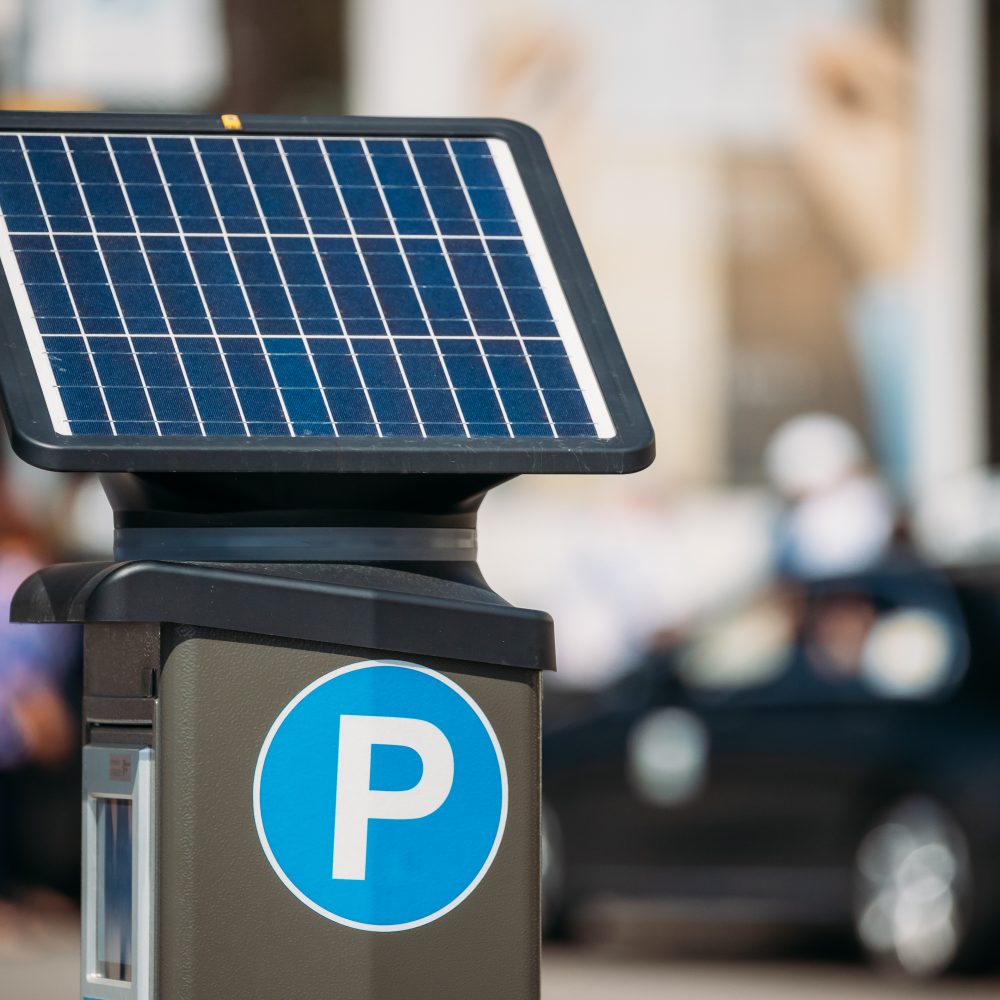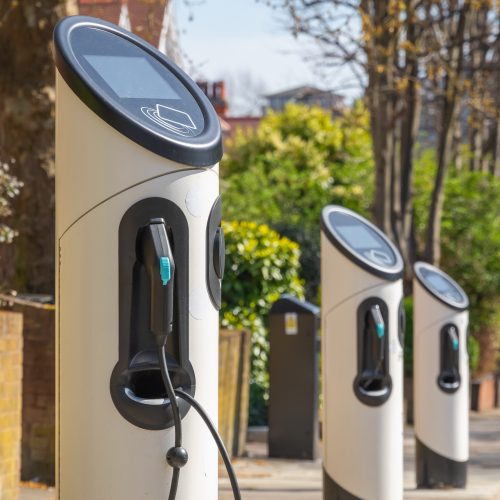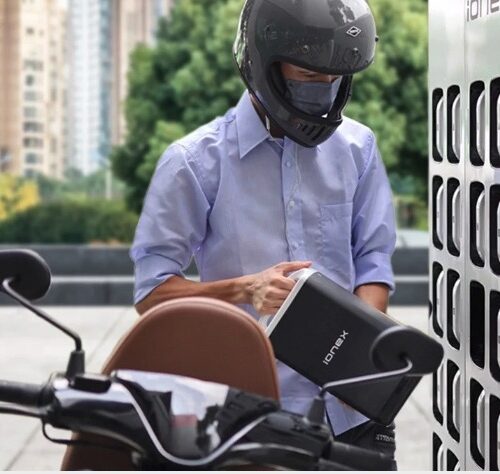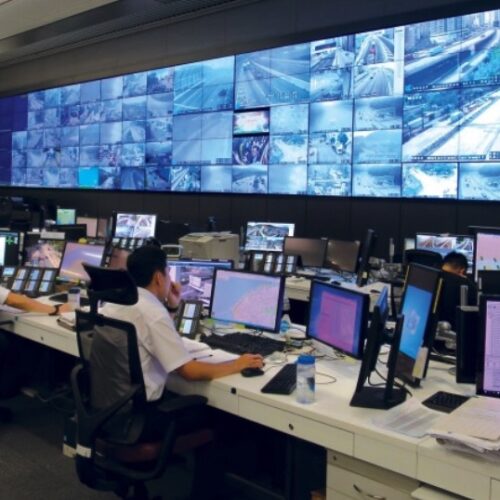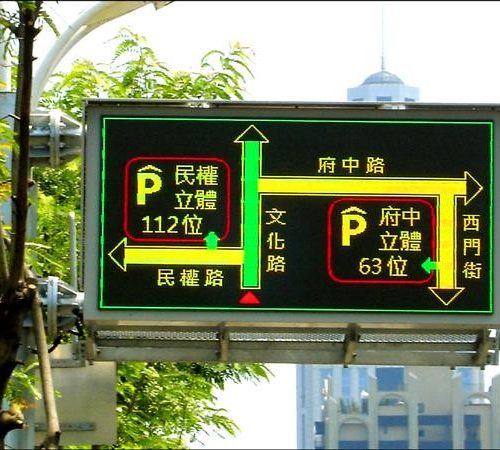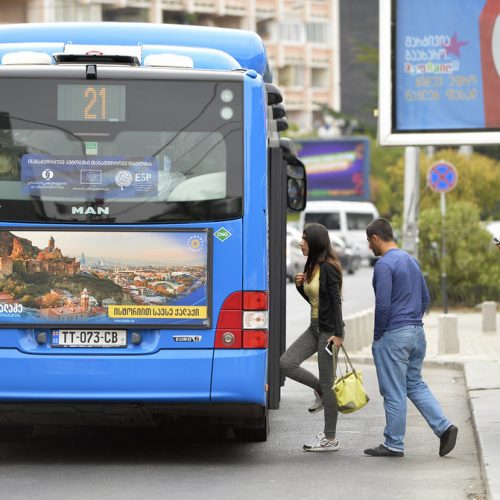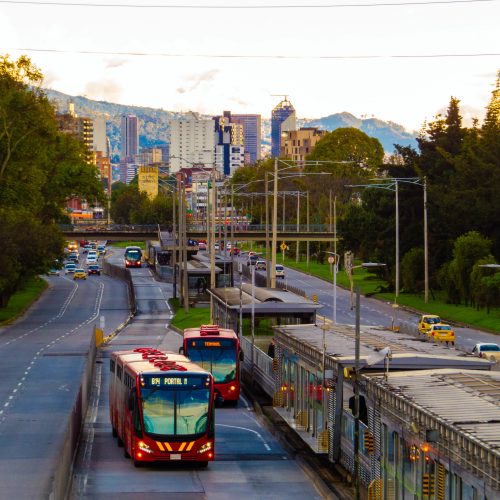Context and policy overview
Taipei is a commercial hub accommodating vehicles from city dwellers and daily commuters from adjacent areas. During peak hours, holidays and busy travel times, drivers often had to circle the city to find a parking space. In the city’s downtown and commercial zones, driving around and queueing to find a parking space became a daily chore: drivers wasted time and fuel, worsened traffic congestion and polluted the air.
Implementation
Phase 1. Pilot projects (1998-2006)
In 1998, therefore, the Taipei City Parking Management and Development Office (PMDO) piloted the first Taipei Parking Information and Guidance System in the city’s downtown area, Xinyi Planning District, and completed it in 2002. The installation of the information system provided drivers with dynamic and real-time information on parking-space availability, and it was outsourced in full to International Integrated Systems, Inc. (IISI).[1] IISI won the pilot-project tender with a bid of €737,000 (TWD 29.47 million)[2] to install the system in 39 public and private parking lots. At the time, the system used light-emitting diode (LED) display panels to indicate the availability of parking spaces nearby (Figure 1).
Figure 1. LED display panel
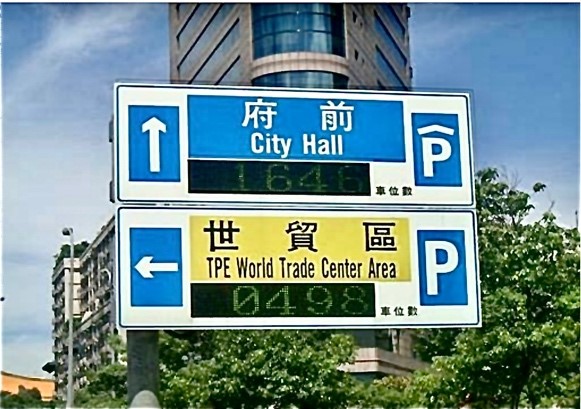
Source: Changchun University of Science and Technology
Since then, the PMDO and the Department of Transportation have promoted the system citywide, while adding more digital features to the system to improve the driver experience. Building on the system, the city aims to achieve four main objectives:
- provide integrated information on availability in carparks in busy or congested areas
- reduce undesirable effects, including excessive emissions, traffic congestion and time-wasting caused by queueing or circling
- increase the occupancy rate of current carparks to boost revenues per lot
- leverage systemic data to formulate better parking-related policies in future.
After receiving positive responses from on-site driver interviews and surveys,[3] the PMDO was motivated to expand the system to two other tourist hotspots, including the Yang-Ming Mountain National Park and Ximen Plaza, outsourced to CECI Engineering Consultants at a cost of €574,000 (NTD 1.8 million) in 2006.[4]
Phase 2. Expansion projects (2006-10)
From 2006 to 2010, the PMDO expanded the parking information system to all 12 districts of Taipei and embarked on an upgrade of both the system’s hardware and software to the latest technologies at the time. This was undertaken by E-Passing Network at a cost of €4.58 million (NTD 14.4 million).[5], [6] On the hardware side, changeable message signs (CMS) came into use, replacing the conventional LED display panels and providing real-time parking-space availability.[7] Thanks to the CMS, drivers were able to gain an overview of availability in parking lots within a radius of 3-6 km (Figure 2).[8] Cashless ticketing systems were also introduced to reduce queueing time, so drivers could pay with a card and not clog up exits. In addition, all public carparks were required to install cameras or sensors, allowing information on availability to be updated dynamically.
Figure 2. Changeable message sign
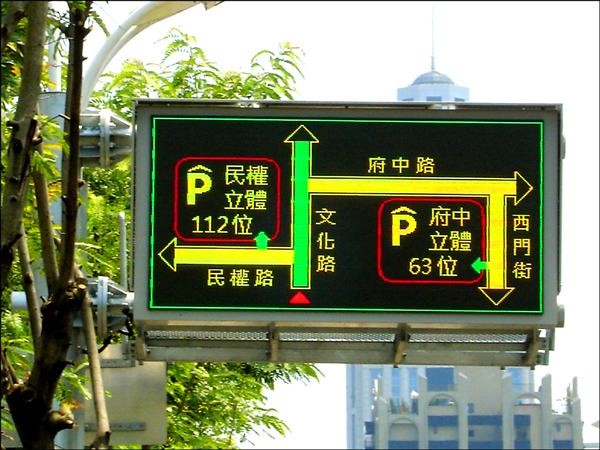
Source: Ministry of Transportation and Communications[9]
On the software side, in 2008, the parking information and guidance system was integrated with another intelligent transport system, known as the Advanced Traveller Information System (ATIS). The platform collects a wide array of transportation information.[10], [11] Road users can consult the ATIS website to obtain real-time car-parking availability, regardless of their location. The website uses red, yellow and green indicators to show the availability of parking spaces (for example, if a parking lot is marked red, there are few or no vacancies).[12] By 2010, 129 CMS boards covered 150 publicly owned off-street carparks, comprising around 52,000 parking spaces. Drivers can also inquire about availability using an audio inquiry phone system.[13]
Phase 3. Smart parking (2010-20)
To offer a better public service and allow road users to access information more easily, in 2010, the PMDO created a mobile app that integrated public and certain private parking-lot information. Users can check parking-space availability, plan their travel itinerary and pay parking fees online and via their mobile.[14], [15], [16]
Barriers and critical success factors
Inviting owners of private parking lots to participate in the parking information and guidance system posed a significant challenge, however. For reasons such as business confidentiality, privacy and a lack of hardware/software interoperability, private parking lots were often reluctant to provide information on parking-space availability, rendering the systemic information incomplete.
The setting of standards, financial incentives and non-financial measures plays a key role in solving these problems. In general, the city authorities have integrated the following three key elements into policy to ensure the success of the plan:
- Interoperability
Interoperability is an important factor to consider when planning and operating a parking information and management system. When Taipei first rolled out the system, its communication protocols for intelligent transport systems were not yet in place, complicating the standardisation of hardware and software processes in different carparks. On realising the problem, from 2011, the Department of Transport and the PMDO put in place standard communications protocols and requirements for hardware and software to regulate the types of technology used.[17]
The authorities also solicit opinions from multiple stakeholders in the private sector, such as consulting companies, industry unions and technology suppliers, and conduct discussions with a view to establishing the necessary technical standards. This is to ensure that the standards are open and feasible in terms of operating, maintaining and updating system data. These standards have created a level playing field, with parking lots and suppliers fully aware of the conditions required for cities to compete fairly in tenders.
- Engaging the private sector
Encouraging private parking lots to incorporate the common system was no easy feat. Two barriers dissuaded them from installing the system. First, before the communication protocols were put in place, private parking lots were in the dark as to what hardware/software met city requirements. Second, private operators have to open up their operating information to the public when collaborating with the city, and some of them were not comfortable revealing such confidential business information.[18]
To tackle the first challenge, the city set open standards for achieving interoperability and offered open APIs (or public application programs) to meet the first challenge, enabling private parking lots to join the system without technical barriers. In addition, it gave clear indications as to the information required when working with the city and what should be done if they wanted to uninstall the system.
Then, to ease companies’ concerns about revealing their occupancy rates to competitors, the system adopted three-coloured indicators as a means of showing parking-space availability rather than how many spaces were left. Drivers can only see the number of spaces left when they near the carpark.[19]
In terms of financial incentives, the municipal authorities provide subsidies to operators who agree to install the system and provide 50 per cent discounts on parking permits to those who adopt the parking-information guidance system.[20]
- Use of revenues
Revenues generated by parking lots equipped with the system go towards maintaining the system and subsidising public transport. According to statistics from the Department of Transportation of Taipei City, total revenue increased from €115.52 million (NTD 3.62 billion)[21] in 2008 to €130.71 million (NTD 4.09 billion)[22] in 2017 in standardised parking-fee terms, as occupancy rates had risen.[23] In 2019, PMDO recorded revenue of more than NTD 4.8 billion and expenditures of about NTD 3 billion.[24] Aiming to promote the use of public transport, the city subsidises bus operators, enabling them to recoup operating costs while offering affordable bus rides to the public.[25] Any profit goes into a parking management fund for the maintenance and management of parking lots, which was about €2.23 million (NTD 7 million)[26] in 2020, and towards subsidies for public transportation.
Results and lessons learned
Today, the Taipei Parking Information Guidance System provides real-time availability information on 1,887 public and private carparks and 6,700 roadside parking spaces.[27], [28] The average search time for a parking space has fallen by nine minutes in the downtown Xinyi district[29] and 92 per cent of drivers say that the system has helped them find parking spaces more effectively.[30] The turnover of kerbside parking has doubled and drivers have said it is far easier to find a parking space.
The website and mobile app have also met with considerable success. Cumulatively, the website has recorded more than 6 million users, while the app has been downloaded more than 190,000 times.[31]
Cities interested in developing such a parking information and guidance system can learn from Taipei’s experience:
- Interoperability is a key component of any parking information and guidance system. It allows the city to maintain both equipment and software efficiently.
- Setting open standards is essential to ensuring interoperability. They serve as a reference point not only for system suppliers, but also parking lots interested in adopting the system.
- In addition to roadside display panels, other tools, including websites, mobile apps and audio inquiry lines, should be put in place to facilitate the user experience and increase accessibility.
- Parking information and guidance systems boost occupancy rates and raise revenues. City governments ought to consider how to allocate the revenue to promote green transportation.








